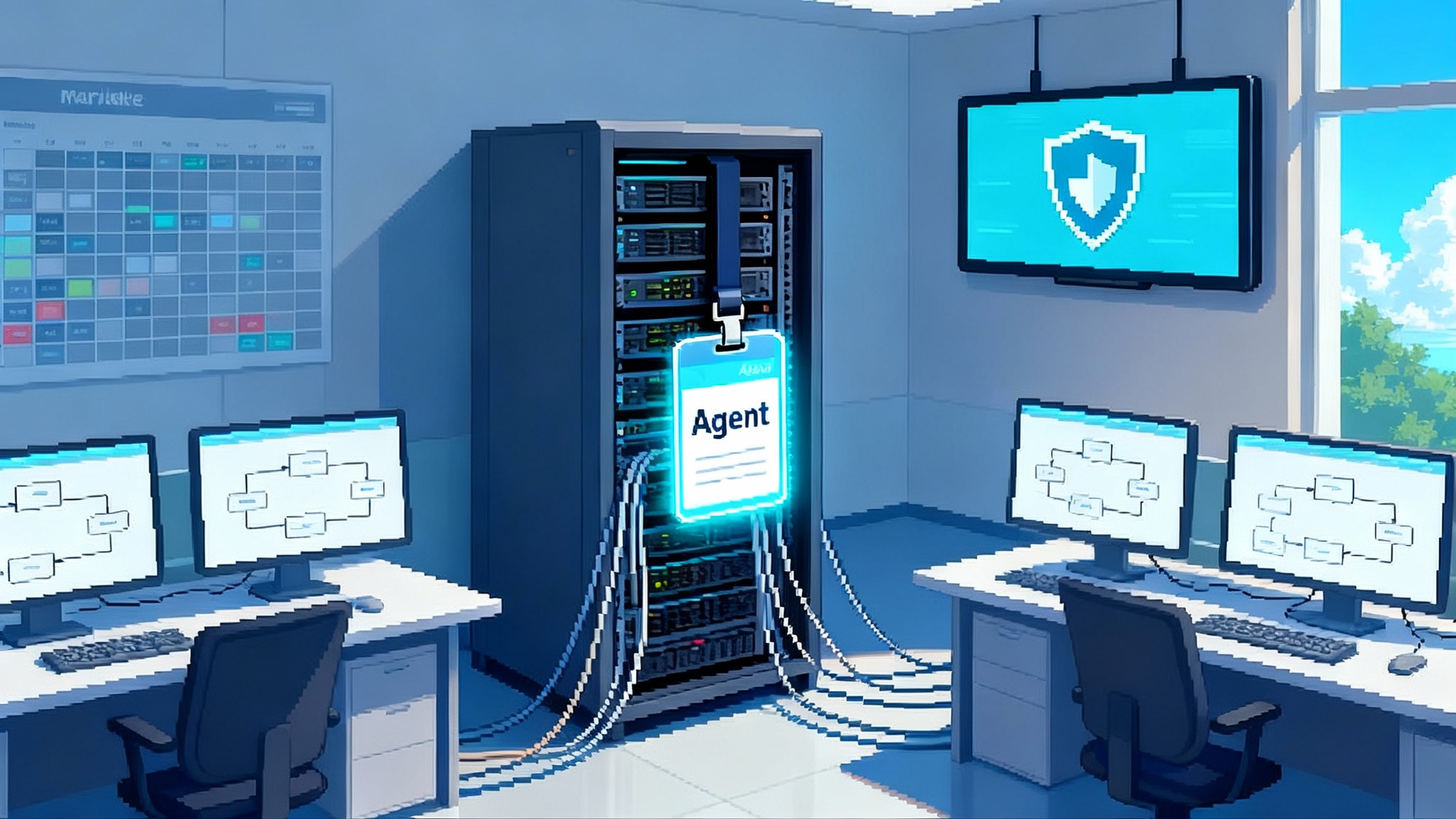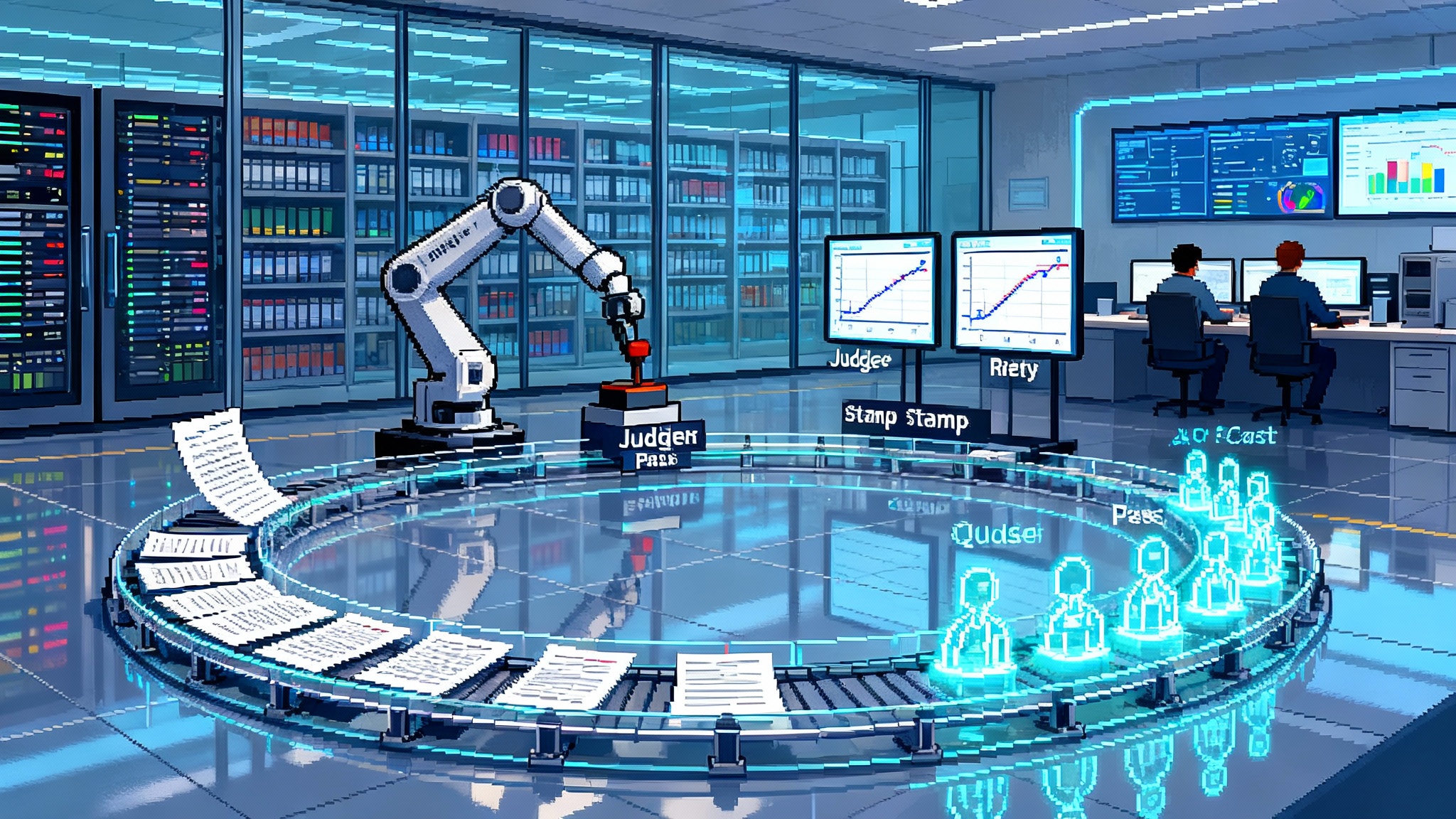Replit Agent 3 crosses autonomy threshold for developer agents
Replit Agent 3 pushes developer agents beyond code suggestions. Live browser tests, automatic fixes, and agent spawned automations turn prompts into shipped features and set a clear playbook for autonomy in 2026.

The moment autonomy starts to feel real
On September 10, 2025, Replit paired momentum with a message. The company announced fresh funding and introduced Agent 3, a release aimed at moving developer agents from helpful copilots to capable builders. The financing matters because it backs a longer run at autonomy, not just incremental autocomplete. See the confirmation in Reuters on Replit funding.
Agent 3 is not a clever suggestion engine. It is a workflow that writes, runs, tests, repairs, and deploys code in sequence. It operates a live browser, performs self tests, fixes mistakes inside a reflection loop, and can spawn specialized agents or scheduled automations to keep work moving after humans log off. In practice, that is the difference between an agent that proposes code and an agent that ships a working feature.
What actually changed in Agent 3
Replit’s update bundles several capabilities that compound into autonomy. The company’s notes spell out the details in the Agent 3 changelog. Four additions stand out.
- Live app testing in a real browser. The agent spins up the running app, navigates through it, and validates behaviors the way a QA tester would.
- Automatic bug fixing inside a reflection loop. When a test fails, the agent captures context, proposes a fix, applies it, and retests until success or a defined stop.
- Agent generation and automations. Developers can create purpose specific agents and scheduled workflows that post updates, triage issues, or refresh content without a prompt.
- Longer autonomous sessions. Extended runs allow larger builds to complete without constant handoffs.
If the previous generation felt like a smart editor, this one behaves more like a junior developer who can stay late, finish the job, and leave a crisp handoff note for the morning crew.
From suggestions to shipping: an end to end example
Imagine you ask for a subscription dashboard where customers update payment methods and download invoices. In the Agent 2 era, the agent would scaffold routes and components, write a payment form, and produce a list view. You would still click through the app, discover that a date filter misbehaves, and notice that the invoice download returns a server error. You would then prompt the agent again with logs and screenshots, wait for a fix, and repeat.
Agent 3 changes that dance. It builds the dashboard, opens a live browser, runs a test that selects last month, validates the invoice count, and attempts a download. The test fails. Agent 3 inspects server logs, sees a signature mismatch in the billing webhook, corrects the header, regenerates the request, and retries until the download works. Only then does it mark the task complete and attach a short report with the steps it took. The agent catches the issue before the product owner does.
The new metrics that matter
Autonomy demands more than lines of code or keystrokes saved. Teams that evaluate Agent 3 style systems are adopting a small set of performance indicators that map to business outcomes.
- Autonomy rate. Percentage of tasks completed without a human intervention. Define a task as a ticket or work item with clear acceptance criteria. Track how often the agent gets from prompt to merged pull request and deployment without a stop for human edits.
- Test coverage in agent land. Percentage of critical user flows exercised by the agent’s live browser tests. Traditional unit coverage does not capture whether the sign in page, the primary funnel, or the payment flow actually work end to end. Agent produced tests should map to these journeys and record pass or fail with screenshots, logs, and timings.
- Recovery time and recovery rate. Median time from failure detection to green build when the agent tries to fix itself, and the share of failures that resolve without human assistance. Expect short recoveries for familiar bug classes and longer ones for novel defects.
These are not vanity numbers. They tie directly to lead time, change failure rate, and service level objectives. They also allow you to compare agent platforms on an even field.
Comparing integrated agents to computer use models
Computer use models operate a browser or desktop to control any software. They are generalists. They can open spreadsheets, navigate interfaces, and press the same buttons a human would. The tradeoff is speed and robustness when the job is to build and maintain a specific application.
Agent 3 follows a different path. It operates inside the development stack, touches code and tests directly, and uses the browser to validate outcomes rather than to labor through every step. That allows clearer units for cost and performance.
Here is a practical way to measure across approaches.
- Cost per merged feature. Total compute and platform charges divided by the number of features that reach production and still pass synthetic checks seven days later. This rewards stability, not just initial success.
- Human oversight minutes per feature. Calendar minutes spent reading diffs, adjusting prompts, or fixing fallout. Lower is better until quality slips.
- Test executions per hour. How many integrated browser tests the agent runs during a build. This is a leading indicator because more verified interactions usually uncover more edge cases.
- Crash loop rate. Percentage of sessions that require a hard stop because the agent oscillates between the same failing states. A high rate signals weak reflection logic or inadequate context windows.
A concrete comparison helps. Suppose your team needs a reporting page with three charts, pagination, and a CSV export.
- With a computer use model, the agent opens your IDE, types code into files, clicks into a local browser, and tries the flow. The upside is minimal integration work. The downside is that latency adds up and the agent is fragile to layout changes. In one pilot, oversight was low at first but spiked when a refactor moved a menu and the agent could not find it.
- With Agent 3, the agent writes code through platform interfaces, runs the app, triggers tests, and patches code on failure. Oversight minutes were higher early while teams tuned acceptance tests, then dropped as those tests stabilized. The integrated loop made CSV export bugs easier to catch because the agent reasoned over server logs and unit tests in the same place it edited code.
Your mileage will vary. The question is not which approach is universally best. The question is which one delivers a lower cost per merged feature in your stack with your constraints.
Why live browser testing and auto repair matter
The history of developer tools is a story of moving feedback earlier. Linters flagged issues at compile time, not after runtime. Continuous integration caught regressions at the pull request, not during a production incident. Agent 3 continues that shift by making the agent responsible for catching broken flows before a human sees them.
- Earlier detection saves compute. Flakiness discovered after deployment triggers rollbacks and rework. Catching a bad dependency version or a missing environment variable inside the agent loop avoids a second round of builds and tests.
- Earlier detection protects customer trust. Fewer customers hit a broken page because the agent validated the journey itself.
- Earlier detection compounds learning. The reflection loop logs what failed, what changed, and which test validated the fix. Those traces become fuel for future runs.
It is the combination that matters. A live browser makes tests realistic. Automatic repair closes the loop fast enough to keep momentum. Agent spawned automations keep checks running at night and on weekends so quality does not decay when humans are idle.
A 90 day pilot you can run this quarter
A disciplined pilot teaches more than a flashy demo. Give yourself 90 days and treat the process like an engineering experiment.
- Start with 10 to 20 small and medium features with clear acceptance criteria and user journeys. Include at least one risky integration such as billing or authentication.
- Require the agent to attach a test artifact to every task. Screenshots, logs, and a brief note on failures and fixes. Store these in your issue tracker.
- Record compute minutes, platform charges, and oversight minutes. Avoid normalization at first. Build a clean baseline of your current process.
- At 30 days, compare cost per merged feature for Agent 3 builds versus human only builds. If human only wins by a wide margin, check whether the agent’s tests are too shallow or the tasks are too large.
- At 60 days, shift half of the pilot tasks to scheduled automations such as nightly reports, content refreshes, or low risk data hygiene. This will reveal whether automations save time or create new failure modes.
- At 90 days, run a load test on the process. Double the number of simultaneous tasks and observe how autonomy rate and recovery time hold up.
If you are already building a multi vendor agent stack, it is worth revisiting your control plane design. A useful reference point is our look at GitHub Agent HQ overview, which shows how central telemetry and policy can guide multiple agents without slowing teams down.
Enterprise readiness without lock in
Vendors will pitch a cloud native agent operating system that promises governance, cost controls, and integrations. That can be right for some organizations. You can still capture most of the value without committing to a single proprietary runtime.
Use this portability checklist during your Agent 3 pilot.
- Keep Git as ground truth. Require every agent change to land as a pull request. Enforce branch protections and code owners for agents the same way you do for humans.
- Keep artifacts portable. Containerize the runtime, define infrastructure as code, and store test suites in the repository. You should be able to run the same app on other platforms or on premises.
- Keep secrets external. Use your existing secret manager and short lived credentials. The agent should request scoped access at run time.
- Keep logs neutral. Ship agent traces, test logs, and deployment records into your observability stack. A vendor console is fine for convenience but should not be the only source of truth.
- Keep model choice flexible. Request the ability to bring your own inference endpoints or switch model providers by configuration. This avoids tight coupling to a single model family.
If identity is a gating concern, pair your pilot with a posture that treats agents like real workforce members. Our piece on Agent ID for enterprise identities outlines how to issue credentials, scope permissions, and audit access so that autonomy does not undermine compliance.
Where Agent 3 fits in the platform race
The agent platform race is converging on three lanes.
- Editor centric builders. Platforms like Replit push autonomy into the developer experience, where the agent operates on code, tests, and deployments directly. The prize is throughput and reliability in software creation.
- General computer operators. Computer use models offer broad automation across tools that will never have deep integrations. The prize is flexibility and universal reach.
- Vertical agent suites. Vendors bundle agents, governance, policy, and data access for specific domains. The prize is compliance and domain expertise.
Expect consolidation in 2026. Buyers will ask for either the best throughput for app building or the best cross tool coverage for business process automation. Hybrids will exist. Winners will make the tradeoffs explicit, measure them, and keep switching costs low.
For teams building production services, it can help to link autonomy to deployment hygiene. The playbook in AgentKit from demo to deploy shows how build pipelines, feature flags, and rollback plans keep velocity from becoming risk.
A practical buying guide
If your goal is an agent that builds and maintains your app, start with Agent 3 and set a high bar for your pilot.
- A written target for autonomy rate and recovery time across a representative task set.
- Visibility into the reflection loop. You should see the plan, the change, the test, and the result.
- A no regrets exit. A documented path to run the same code, tests, and deployment pipeline outside the vendor’s cloud.
- A clear cost model. Per minute, per task, or per seat, with a cap that you can enforce automatically.
If your goal is to orchestrate work across many tools and web interfaces, start with a computer use model and apply the same expectations. Then compare cost per merged feature and oversight minutes head to head.
Risks and unresolved questions
- Flaky tests are contagious. If the agent inherits unreliable tests, it will oscillate between false failures and overfitted fixes. Harden the test suite before you scale.
- Oversight debt is real. Lower oversight per feature is helpful, but too little review can drift coding standards and security posture. Enforce policy in the pipeline.
- Cost spikes lurk in long sessions. Extended autonomous runs are powerful, yet misuse can burn budget. Default to shorter sessions with automatic checkpoints, then extend only when it pays off.
- Integration boundaries matter. Agent spawned automations that touch chat tools or billing systems should have scoped permissions and rate limits to prevent event storms.
None of these risks are unique to Replit. They are the standard hazards of automation at the point of production. The difference now is that the same tooling that creates the risk also provides the control knobs to mitigate it.
The bottom line
Agent 3 is a meaningful step toward autonomous software creation. Live browser tests reduce surprises. The reflection loop shortens recovery. The ability to spawn agents and automations keeps work moving without a human at the keyboard. Pair that with fresh funding and the direction is clear. The next year will test not whether developer agents are useful, but where they deliver the best cost per merged feature with the least oversight debt.
If you are choosing platforms heading into 2026, treat this like any engineering decision. Define the job. Measure the outcomes. Keep switching costs low. Autonomy is arriving. The teams that write down how they will measure it will capture the benefits first.








